Inside Out: look at your world from the inside
The creativity of the animation team working on Inside Out can only be envied. Taking the courage to show children what no one has seen (the inner world of a person) is a step of tremendous courage, or rather, endless adventurism. But the creative tandem of Disney and Pixar studios coped with the difficult task, and the mysterious headquarters in the head nevertheless lifted the curtain of secrecy.

This is the story of five human emotions that drive eleven-year-old Riley. The girl will have a difficult period: the beginning of adolescence coincided with the move from Minnesota to San Francisco. She has mixed feelings, intensified by various problems: the truck with things is delayed, dad is always busy at work, friends are far away, no one understands her. Joy, Sadness, Fear, Anger and Disgust are trying to cope with a difficult situation, standing at the control panel in the Brain Center.

The birth of children’s emotions
Eleven years ago, Riley opened her eyes and saw her happy parents. This is how Joy first appeared. Memories-balls, which then fell into the brain, were painted in a bright sunny color. Further life experience gave her many discoveries and new emotions.
Fear protected the baby from dangers. Anger tried to restore justice when it seemed to him that she was being wronged. Disgust prevented unpleasant sensations from various new items. And Sadness … Other emotions did not at all understand her presence in the Control Center: the bore only spoiled the mood of the ward!
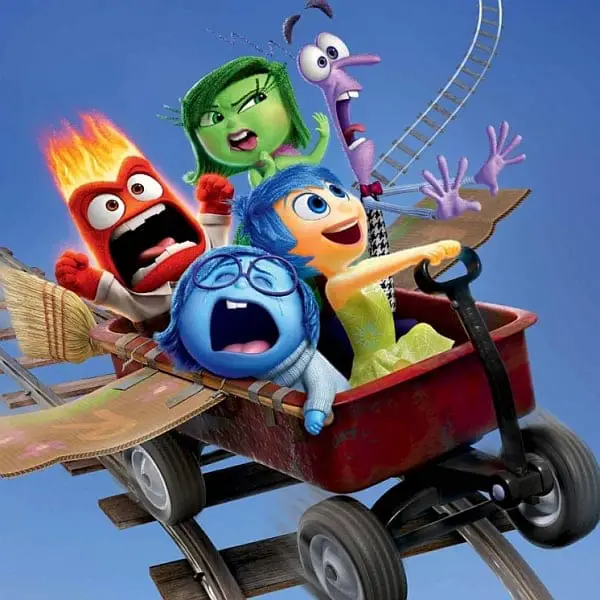
Why are there only five characters in a child’s head?
Many critics are outraged that the Pixar team showed only five emotions. “The man is not as primitive as the dog shown in the finale!” – they say. But initially, the animators were planning a lot more unusual characters. They did not leave the concept art in the cartoon reality of Greed and Gloom, Irritation and Embarrassment. Shame, too, did not find a place in the heroine’s head.

Why is that? It took a lot of work, an extremely rich script, to revive even five emotions. And if we introduce the rest into history? The cartoon would have lost its harmony and consistency. The heroes would not be revealed at all, and small viewers would be very disappointed very quickly.
In addition, the top five are basic, the rest are composite. Anger can include irritation, anger, rage. Fear governs fear, nervousness, anxiety, and terror. Joy unites interest, pleasure, pleasure. One of the value islands, Honesty, is responsible for guilt and shame. Therefore, the choice of multipliers is quite understandable, and does not cause any complaints from anyone except psychology experts.
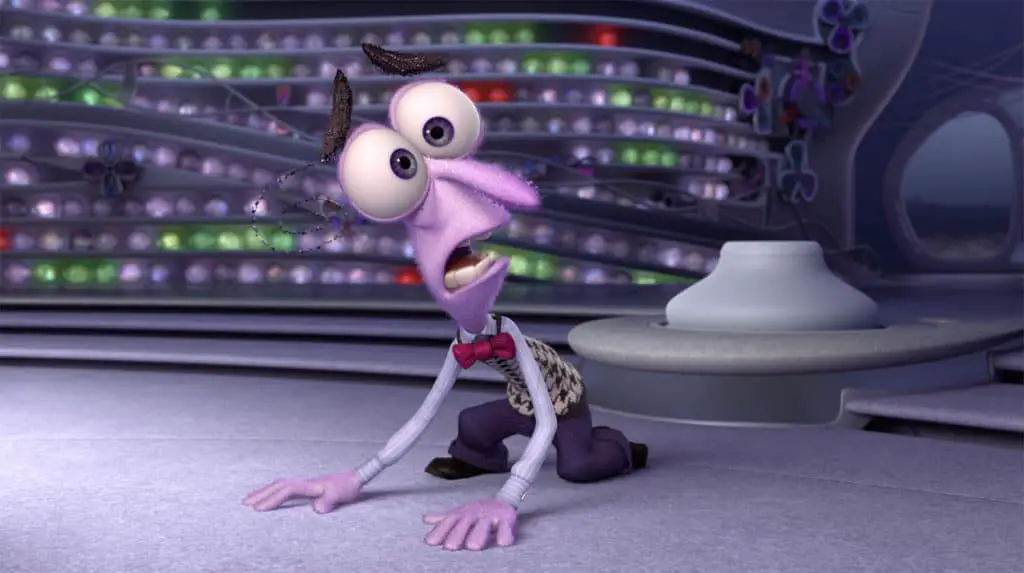
Problems begin
Riley has a very important day ahead of her. She will meet the new class for the first time; and the future life largely depends on how everything goes. Joy has prepared the most beautiful key memories, planned out every minute of the coming day. But when the ward was telling her classmates about herself, Sadness intervened and ruined the bright balls with her touches!
The teacher and the children saw the newcomer crying. Of course, Fear immediately conveyed its horror to the girl, and Disgust – embarrassment and shame. Joy tried to save the day, but it ended up being dragged into the labyrinths of long-term memory with Sadness. In the further development of events, the animators showed how important lost emotions are for the psychological well-being of a person.
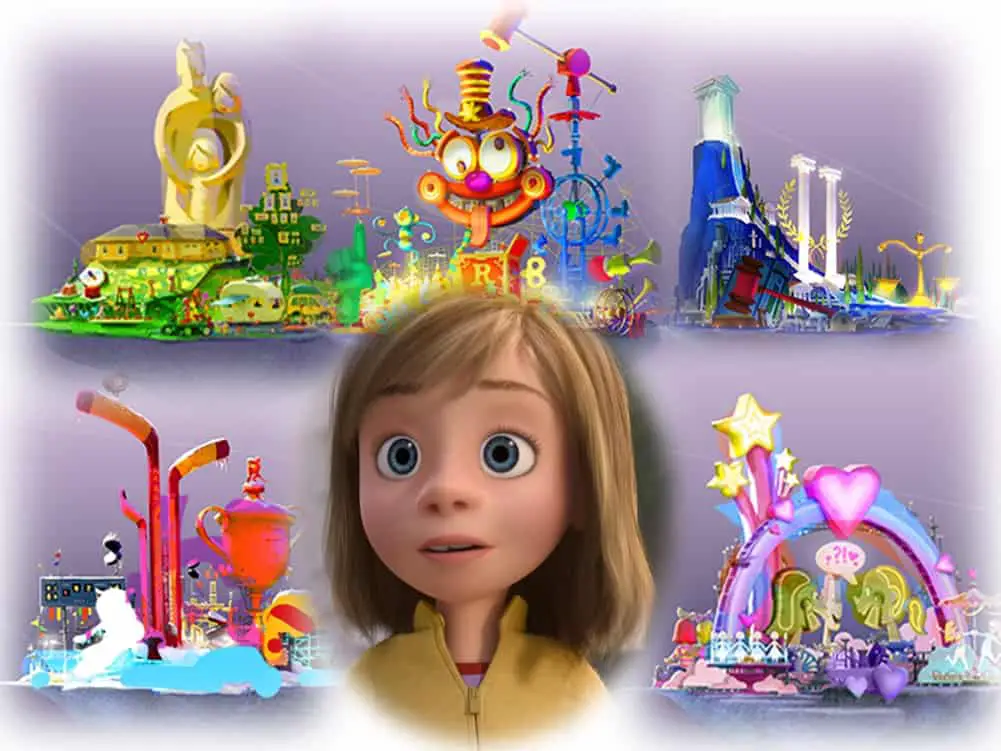
Personality Sides Islands
Lost memories were key. They are the basis for the system of individual values, which made the heroine of “Puzzle” a versatile personality. The cartoonists showed us the Islands of Mischief, Family, Honesty, Friendship and Hockey (a favorite hobby).
In a difficult moment, Riley finds herself without emotional support. As Joy and Sadness try to find a way to return to the Brain Center, the girl’s world begins to crumble. Oh, if only the parents could understand in time that she needs much more support than they themselves! Adults had to remember, together with their daughter, important events related to Minnesota. We could make plans for the future together, because life did not end with the move, but only began. The family would be helped by hope, bright sadness, love. Alas, at the will of the writers in the brain headquarters of mom and dad, completely different characters were in charge.

Adult emotions
Moving to San Francisco wasn’t easy for my parents either. The family dinner scene demonstrates this perfectly. Sadness is in charge of Mom’s head center, and Anger is the boss in Dad’s mind. It should be noted the unanimity with which the emotions of adults rule their masters. When, due to the lack of Joy, a scandal erupted in Riley, my mother consoled herself with dreams of a brutal pilot, and the father was satisfied with the strictness shown in raising the child. And no contradictions in your head!
By the way, pay attention: a woman has only “girls” in her head, and a man has only “boys”. This means that they have clearly defined their gender roles. But their daughter is still at a crossroads. As a girl, she still prefers wearing trousers and a boy’s sport. But the presence of a fictional boyfriend who is ready to fight for the lady of the heart convinces the viewer that the development of the heroine is proceeding without deviating from generally accepted norms.
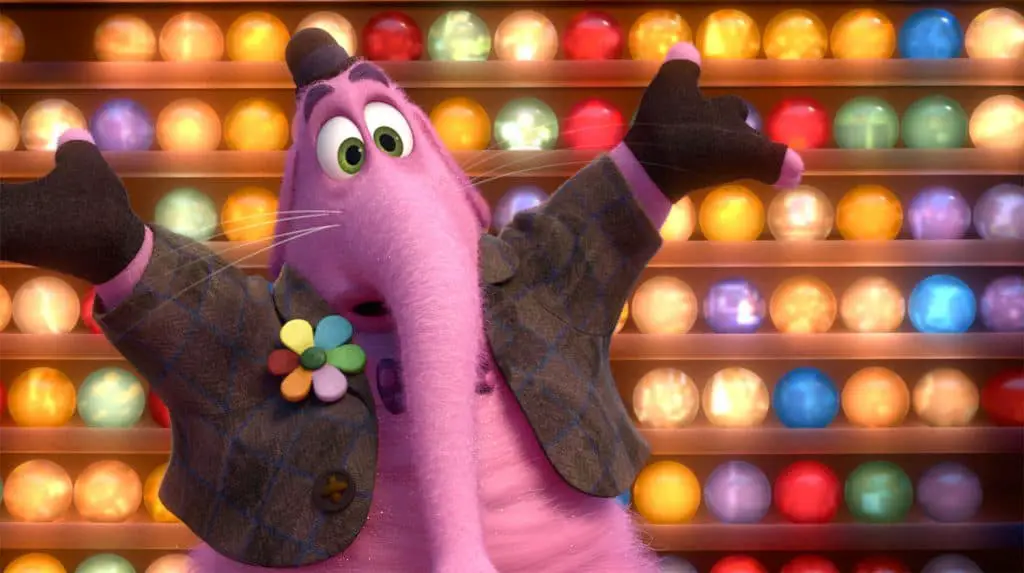
A sacrifice for happiness
While the emotions remaining upstairs tried to help Riley, Joy saw a stunningly awkward creature. It was half cat, half elephant, and a little more dolphin. The baby immediately remembered what kind of eccentric she had met. Bingo Bongo! An imaginary friend who appeared in early childhood. He promises to help Joy return to headquarters, but together with Sadness they see the Islands of Memory crumbling one after another, cutting off all paths. What’s going on?
It’s simple: the remaining emotions are trying in vain to help the girl cope with the impending depression. Because of Anger, Riley had a Skype fight with her best friend, left the sports team. So two islands – Friendship and Hockey – sank into the abyss of Oblivion at once. Even earlier, due to the lack of the ability to rejoice in little things, Mischief disappeared.

Deciding to fill the girl’s memory with new pleasant memories, emotions gave her a bad idea – to escape to Minnesota. Having deceived her mother for the first time (by stealing money for a ticket), the girl lost her Honesty; and the morning indifference of the parents, who could have stopped their desperate daughter with one tender kiss, finally destroyed the Family.
Because of what happened in deep memory, a catastrophe happened! Joy, together with Bingo-Bongo, fell into the abyss of Oblivion, where unnecessary memories crumble to dust. It was here that the ridiculous weirdo accomplished the feat. He sacrificed himself so that the kind emotion does not disappear forever. Thanks to an old magic “rocket” on song fuel, Bingo-Bongo helped her get upstairs. What is the meaning of this touching scene? Most likely, it is that childhood memories are the cornerstone of a person’s life.
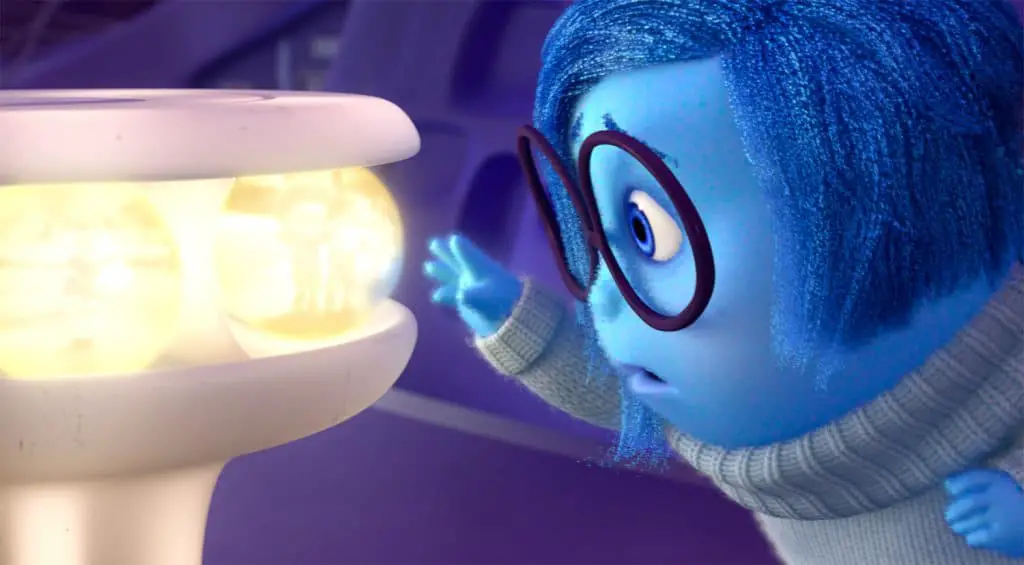
Impossible To Live Without Sadness
Joy made an important discovery as she sifted through key memories in the Abyss of Oblivion: it was Sadness that helped Riley cope with the stress of her failure to score an important goal in a match. Emotion then made it clear to parents and friends how the girl needs their support. Sometimes we all just need to talk and cry to be comforted.
Inspired by the discovery, Joy found a way out of a difficult situation, together with Sadness, reaching the Brain Center. And there panic reigned: the control panel broke down, and apathy seized the girl. Riley has lost her zest for life. This is not yet depression, when a person stops reacting to what is happening and making decisions, but already a borderline state.
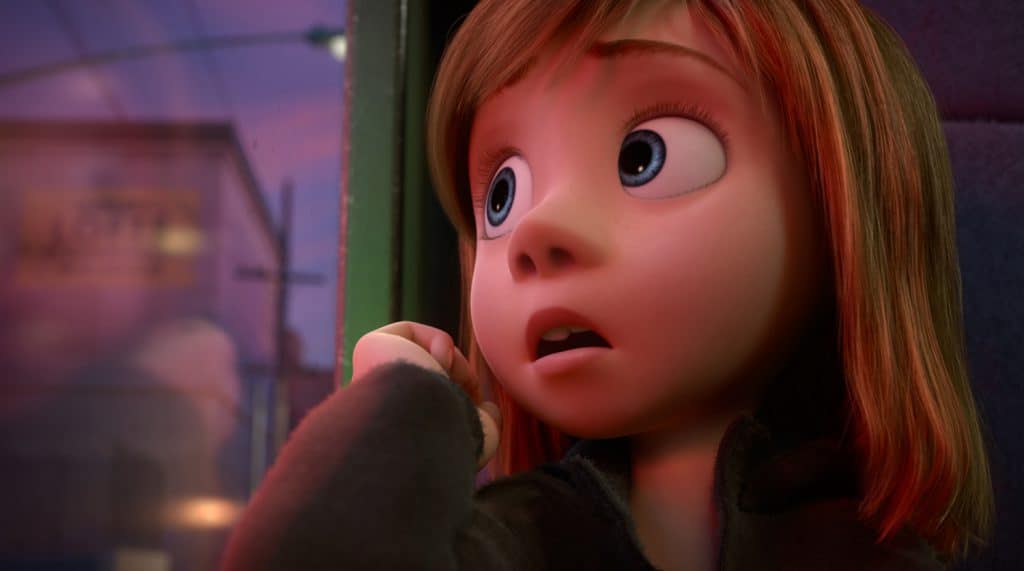
Alarmed Joy asked Sadness to take matters into its own hands. And the sad girlfriend did it: she removed the reckless idea from the head of the fugitive. Riley herself returned home, where her anxious parents were waiting for her. The touch of tiny fingers added a bit of blue to the Minnesota sunshine balls. This happens when we say goodbye to something or someone good. At the same time, bright feelings are painted in sad colors. Accepting parting as inevitable and keeping fond memories, we are ready to move on. So it happened with the heroine’s family, after which all sides of the personality were restored to the girl. She was ready to perceive the world as colorful again.
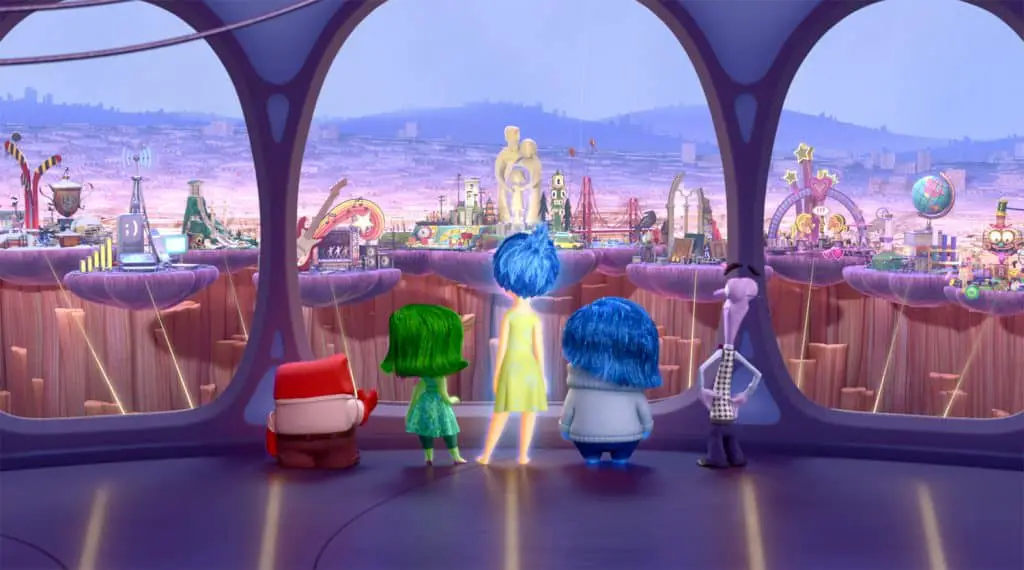
As a result of her experiences, Riley has matured. She found new friends, her memories have now become colorful, and emotions in her head have received a brand new remote control with enhanced capabilities. There are more islands. The World of Fashion, Boyfriends and other things has appeared … Life has improved!
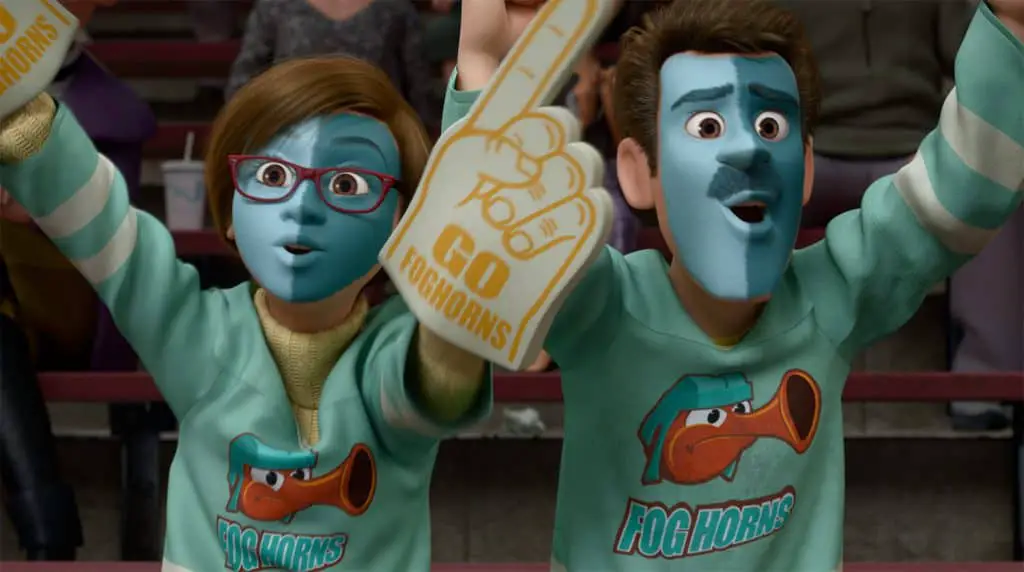
So what is the main meaning of the cartoon?
The “puzzle” among thinking viewers raises a lot of questions regarding the scientific nature of what they saw. The process of forming a girl’s personality is also ambiguous. Another article can be devoted to the analysis of shortcomings and errors. But this was the first attempt by animators to show clearly the mental processes in the human mind, so we will focus on the most important thing that this ingenious animation gives.
For young children, the meaning of the cartoon is in the educational message. The guys learn about the feelings that are trying to control them. Emotion arises by itself in response to stimuli, but only a person can decide how much to succumb to its influence. Children receive from what they see, so far primitive knowledge about the structure of memory, about imagination and abstract thinking, about the conscious and unconscious.
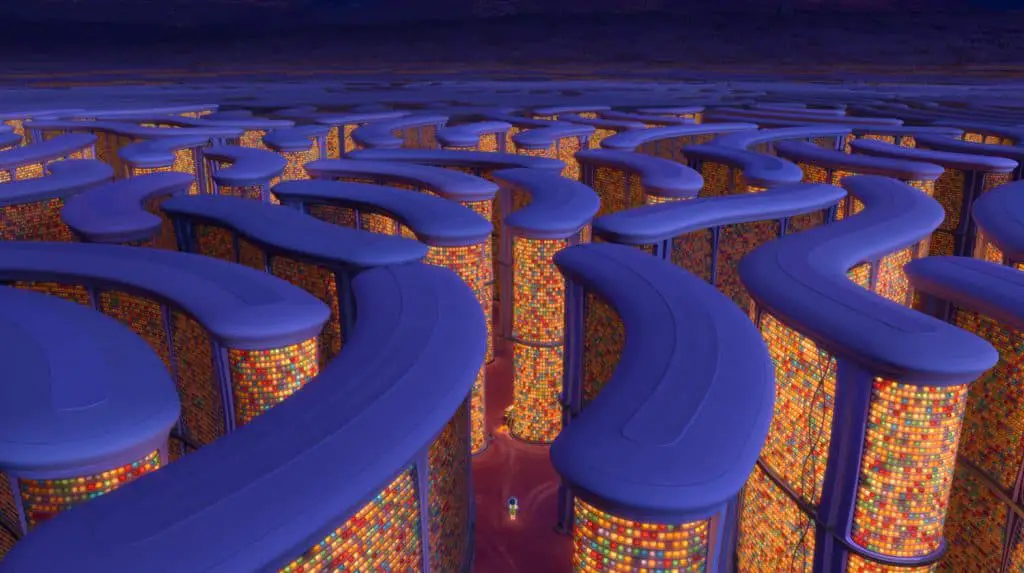
In addition, adolescents will think about ways to get out of stressful situations, accompanied by a sub-depressive state (desensitization). The cartoon draws a significant conclusion: the way to oneself in such cases lies through the restoration of the personality by rethinking the existing experience. And one more thing, what the guys should learn: when you need attention, you need to clearly show it. If Riley had let her parents see how sad she was, then there would have been no dangerous adventure.
Adults, on the other hand, will learn from watching an understanding of what is happening with children during the period of growing up. This will help the family to survive the adolescent crisis without any special excesses: the support of adults depends on how painlessly the most important process for the child will pass.







